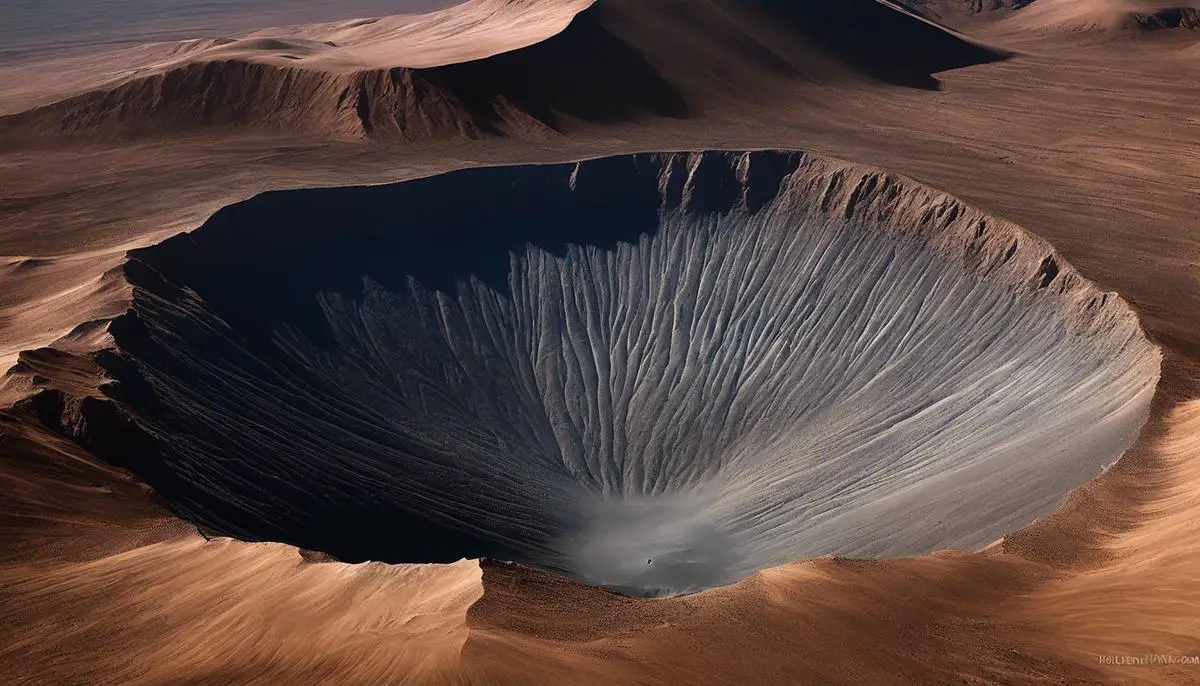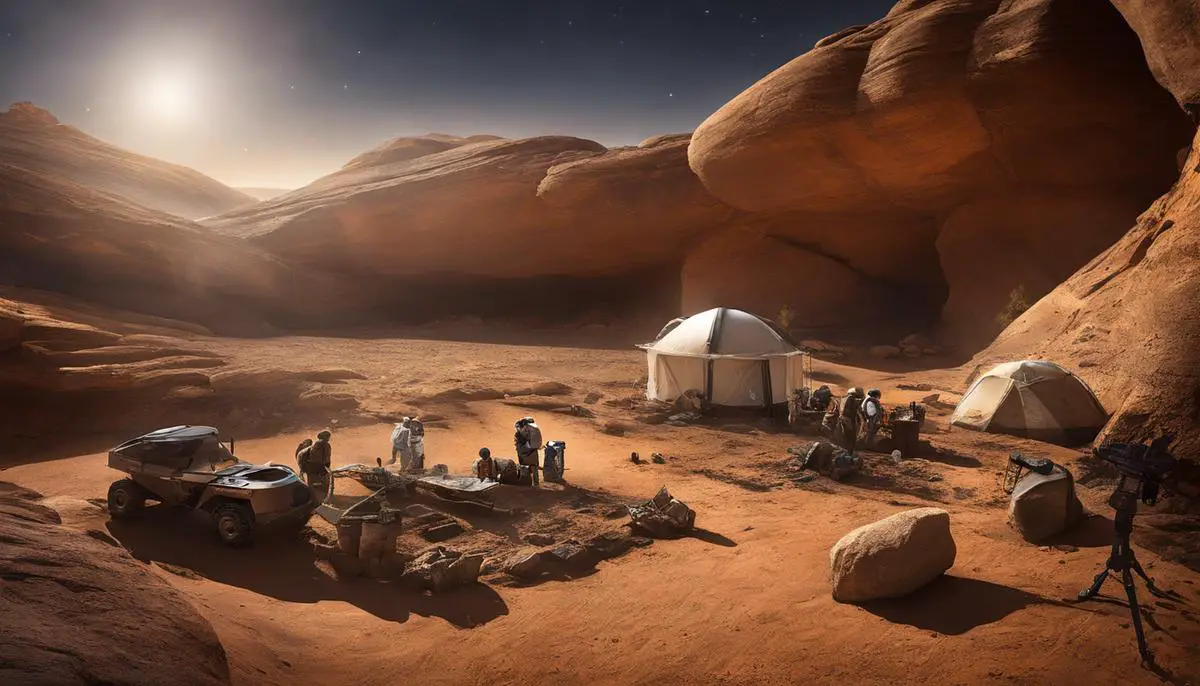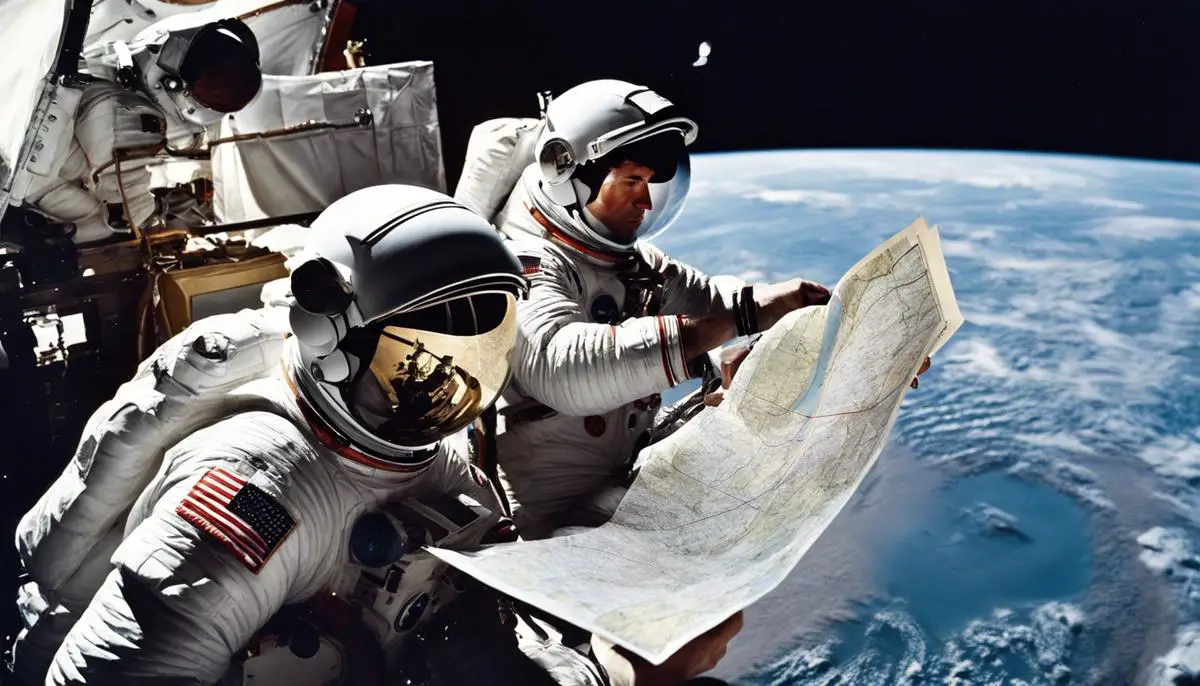Apollo 17, the last of NASA’s Apollo missions, captivates interest and intrigue owing to its significant scientific contributions and the unique challenges it posed. One of the intriguing aspects of this mission is the selection of the landing site at the Taurus-Littrow valley. Cognizant of the geological interests, safety parameters, and specific mission goals, the pronounced scrutiny and analysis behind this choice is a testament to the meticulous preparation that defines space missions. Coupled with deciphering the topographical attributes of the landing site provides an elaborate understanding of the lunar surface and fundamentally contributes to our knowledge of lunar geology. But this was just the beginning. The core of Apollo 17’s expedition was spent conducting a multitude of scientific experiments, each adding a valuable piece to the complex jigsaw that is lunar science.
Contents
Landing Site Selection for Apollo 17
The Intrinsic Factors Shaping the Selection of Taurus-Littrow Valley for Apollo 17: An In-depth Analysis
Deeply etched into the annals of space exploration history, the Apollo 17 mission remains a testament to human ingenuity and ambition. Famed for being the last manned mission to the lunar surface under the Apollo program, it is the selection of Apollo 17’s landing site, the Taurus-Littrow valley, that warrants an exploration beneath the surface details available at face value.
Among the extraterrestrial terrain’s myriad choices, Taurus-Littrow offered a unique amalgamation of the Moon’s geological history delineating highlands, valleys, and volcanic material. A rich lunar tableau permitting comprehensive scientific investigation; this unique landscape was laden with the potential of unearthing vast inferences about the Moon’s geological evolution, particulary its volcanic activity.
A major determinative factor in the selection of the Taurus-Littrow valley was its topographical composition. Agentive to the scientific objectives of understanding the Moon’s geological and seismological phenomena, Apollo 17’s distinct focus on sampling rocks and surface material necessitated a site suffused with geological diversity. The valley, festooned with hills, craters, and a mountainous range, allowed investigation of the older lunar crust as well as volcanic material.
The Taurus-Littrow valley is effortlessly distinguishable by its two iconic features: The South Massif and North Massif, colossal heaps of materials presumptively ejected from ballistic impacts. Imbuing the moon’s violent past, these massifs proposed to proffer valuable insights about the Moon’s internal structure and seismic activity due to their composition of deep-seated crustal materials.
Another compelling reason for Taurus-Littrow’s selection was the grandeur of a distinguished feature, Lara Crater. Distinguished as a dark-mantled deposit, it was conjectured to possess pyroclastic material or volcanic glass beads. The analysis of such specimens held promises of incredible scientific implications, such as important data about the moon’s volcanic activity and determinations of the stable isotopes of its internal gases.
The meticulous selection of Taurus-Littrow encapsulates the depth of calculated scientific objectives that fueled Apollo 17’s successful mission. Harmonizing technical feasibility with scientific ambitions, this decision reflects a profound appreciation for not just conquering novel frontiers, but understanding them. The footsteps imprinted into the valley’s sediment aren’t just footnotes in history, but poignant reminders of a profoundly human curiosity, an insatiable yearning to comprehend the cosmos one lunar valley at a time.

Topographical Characteristics of the Apollo 17 Landing Site
Delving deeper into the topographical narrative, the study of Taurus-Littrow valley encapsulates an intriguing chapter of lunar geology. This lunar site is a puzzle box of geological features unlike any terrestrial counterparts. Through strategic exploration and analysis of this unique site, an encyclopedia of lunar geological knowledge has been compiled, profoundly impacting our understanding of the Moon’s geology.
The dynamic topography of Taurus-Littrow valley, with its towering massifs and expansive flat regions, chief amongst them the relatively flat valley floors, offers a tantalizing clue into the geological history of the Moon. These regions of the valley, uncontaminated by lunar and meteorite impacts, preserve the original lunar crust matter dating back to the early Solar System. The unadulterated form of these samples offers a veritable time-capsule that aids scientists in reconstructing the lunar narrative.
Notably, the presence of significantly younger mare basalts in the valley provides a roadmap for age dating of lunar surfaces. The isotopic and petrologic studies of these lunar basalts foreground the process of lunar differentiation, in particular the interaction between the crust and the lunar mantle. Additionally, these young volcanic deposits, coupled with the valley’s central location within the surrounding older lunar highland terrain, provides a unique opportunity to encapsulate the evolutionary history of the Moon.
Moreover, the Taurus-Littrow valley’s geometrically distinct features such as scarps, rilles, and landslide deposits illuminate the complexities of Moon’s tectonic framework. The distinctly different geomorphic entities juxtaposed within this valley disclose the interaction between surface processes and endogenic geological activities. This facet contributes significantly to the comprehension of moonquakes and the underlying causes of these lunar seismic occurrences.
The abundance of impact craters in the Taurus-Littrow region, especially in the highland-regolith transition zone, also carries an extensive catalog of knowledge. These characteristic impact features reveal an arc of lunar bombardment history, helping to chart the sequence of interactions between the Moon and interplanetary matter. The computational simulations based on these crater distributions are paramount in refining our models of Solar System dynamics.
Finally, the continued study of the Taurus-Littrow valley topography illuminates our broader understanding of airless body surfaces space weathering. This includes the study of micrometeorite bombardment, interaction with the solar wind, and even cosmic radiation, all contributing to a unique lunar space weathering signature.
In essence, the topography of the Taurus-Littrow valley is indeed a microscopic representation of a macroscopic lunar environment, a truly priceless natural laboratory. The geological details imprinted in this valley lay bare the inherent complexities and nuances of lunar evolution, impacting not only our understanding of the Moon but also offering a comparative benchmark for other planetary bodies. This invaluable knowledge has and continues to nourish our dawning exploration into the cosmic neighborhood that we, as terrestrial beings, are privileged to embark upon.

Scientific Experiments at the Apollo 17 Landing Site
Continuing from the first part of our discussion, the expanse of established understanding does not limit the scope of lunar exploration. At the Apollo 17 landing site, numerous scientific experiments were conducted, leading to a wealth of discovery.
In navigating the dynamic topography of the Taurus-Littrow valley, astronauts employed an array of equipment, including the rover and various handheld tools, to conduct experiments. Detailed surface and subsurface measurements allowed for a better understanding of the thermal properties of lunar regolith and evaluation of the heat flow from the moon’s interior.
Samples of the preserved original lunar crust from the valley floor were collected, offering a unique opportunity to study the primary composition of the Moon. Detailed analysis of these samples, particularly the anorthosite rock, led to substantial advancements in our understanding of lunar evolution and differentiation.
Radioisotope dating of mare basalts offered estimations of lunar surface age and its formation history. These computations provided crucial data in understanding the moon’s volcanic history, giving way to theories of lunar thermal evolution.
Experimentations with lunar differentiation provided evidence of the interaction between the crust and mantle. These findings gave insights into the Moon’s interior, shaping our understanding of its early geological history, and providing a benchmark for studying the interior of other celestial bodies.
Investigations of lunar tectonics revealed abundant geometric features, such as lobate scarps and rilles, that were indicative of tectonic activity on the Moon. This led to models of the tectonic framework facilitating our comprehension of lunar crust’s structural development.
Notably, lunar seismic research continued from previous missions. Apollo 17 expanded on theories regarding moonquakes and the moon’s seismic occurrences. These seismic studies provided clearer evidence of the Moon’s internal structure, particularly its solid iron-rich core.
Impact craters were intensively studied, with their sizes and distributions helping to map lunar bombardment history. This information refined models of solar system dynamics, and enabled comparisons with other celestial bodies, such as Mars and asteroids.
The investigation of the effects of space weathering on lunar surfaces gave rise to novel information related to micrometeorite impacts and cosmic ray exposure. This assisted in developing a more comprehensive model of the interplay between space environment and lunar surface transformation processes.
Now, through the lens of this knowledge, Taurus Littrow reveals itself not simply as a tangible reminder of a spectacular human achievement, but as a testament of our ever-growing comprehension of the universe. It is indeed palpable evidence that our celestial pursuits will continue heralding scientific breakthroughs, and promoting the human species as explorers and knowledge-seekers.
Each artifact of the Apollo 17 mission left at the Taurus-Littrow site – from footprints to flags, tools to discarded spacecraft components – not only marks our presence, but also our insatiable curiosity and enduring ambition to understand the majestic complexity of our universe.

The Legacy of Apollo 17’s Landing Site Exploration
An extensive exploration of the Apollo 17 landing site in the Taurus-Littrow valley has provided critical enlightenment cashing a radiant beam on our current understanding of the Moon, paving the way for subsequent lunar missions with increased precision.
The exploration of this landing site, in no small measure, was a milestone in studying dynamic topography – a subject that had been a conundrum in lunar science before the Apollo 17 lighted on the Moon’s surface.
Our understanding of lunar topography significantly improved based on the panoramic shots and data collected from the landing site. The Taurus-Littrow valley – covered with boulders, layered bedrock, and valley plains, provided a wealth of information regarding lunar geological constitution. The astral body’s essential properties, naturally absent in mainstream Earthly environments, have been mirrored in the dynamic topography of the valley.
Beyond the geographical structure, the stored wisdom encased in the lunar crust within the valley floor has continued to baffle our scientists. The preserved lunar crust – discovered from collection and subsequent examination of samples – has revealed symphonies of the Moon’s history and evolution, thus broadening our understanding and feeding our curiosity about the composition and geological development of our natural satellite.
Roaming further into the depths of these revelatory findings, the age dating of lunar surfaces was advanced tremendously. Apollo 17’s astronauts utilized mare basalt samples – a crucial geochronological resource – fine-tuning our gauging of the Moon’s age and revealing the evolutionary timeline of its surfaces.
Palpably evidenced interactions between the crust and mantle, gleaned from samples collected from the Taurus-Littrow valley, proffer considerable insight into the structure and evolution of the Moon’s interior. This information feeds into a wider understanding of lunar differentiation, a vital perspective on conceiving the nature of our celestial companion.
From a tectonic vantage point, geometric features examined in the curated samples have unveiled the underlying tectonic framework of the rigid lunar crust, thus enriching our knowledge of Moonquakes and lunar seismic occurrences.
The exhaustive study of the impact craters peppering the lunar landscape is another major scientific leap ensuing from the Apollo 17 sojourn. Deciphering the lunar bombardment history, discernible through crater distributions, is crucial to the refinement of models on Solar System dynamics.
Space weathering’s eons-old storytelling on the lunar surface is another insight mined from this odyssey. The understanding of its effects on lunar surfaces grew exponentially after studying the archived samples and experimental data returns from Apollo 17.
Lastly, findings from the Taurus-Littrow exploration site served as a comparative benchmark for other lunar and planetary bodies. The facets of scientific break-through from the site act as a testament to human curiosity and ambition in exploring and understanding the cosmos. Indeed, the high resolution and quality collection from this lunar surface exploration has not only magnified our understanding of the Moon but have also opened up a world of possibilities for future lunar and planetary explorations.

Apollo 17’s mission to Taurus-Littrow valley was not merely an end to the Apollo missions, but a beginning of a deeper and more profound understanding of our celestial neighbor. Discoveries such as the orange soil and the outcomes of various experiments like the Lunar Surface Gravimeter have been instrumental in shaping lunar science as we know it. As the legacies of the Apollo 17 landing site exploration continue to flourish, the mission remains an invaluable symbol of human determination and scientific curiosity. With each nugget of information gleaned from the lunar samples and each realization affirmed or corrected, it is clear that the final Apollo mission anchored a stepping stone towards future lunar explorations and understanding the Moon’s intricate relationship with Earth.
